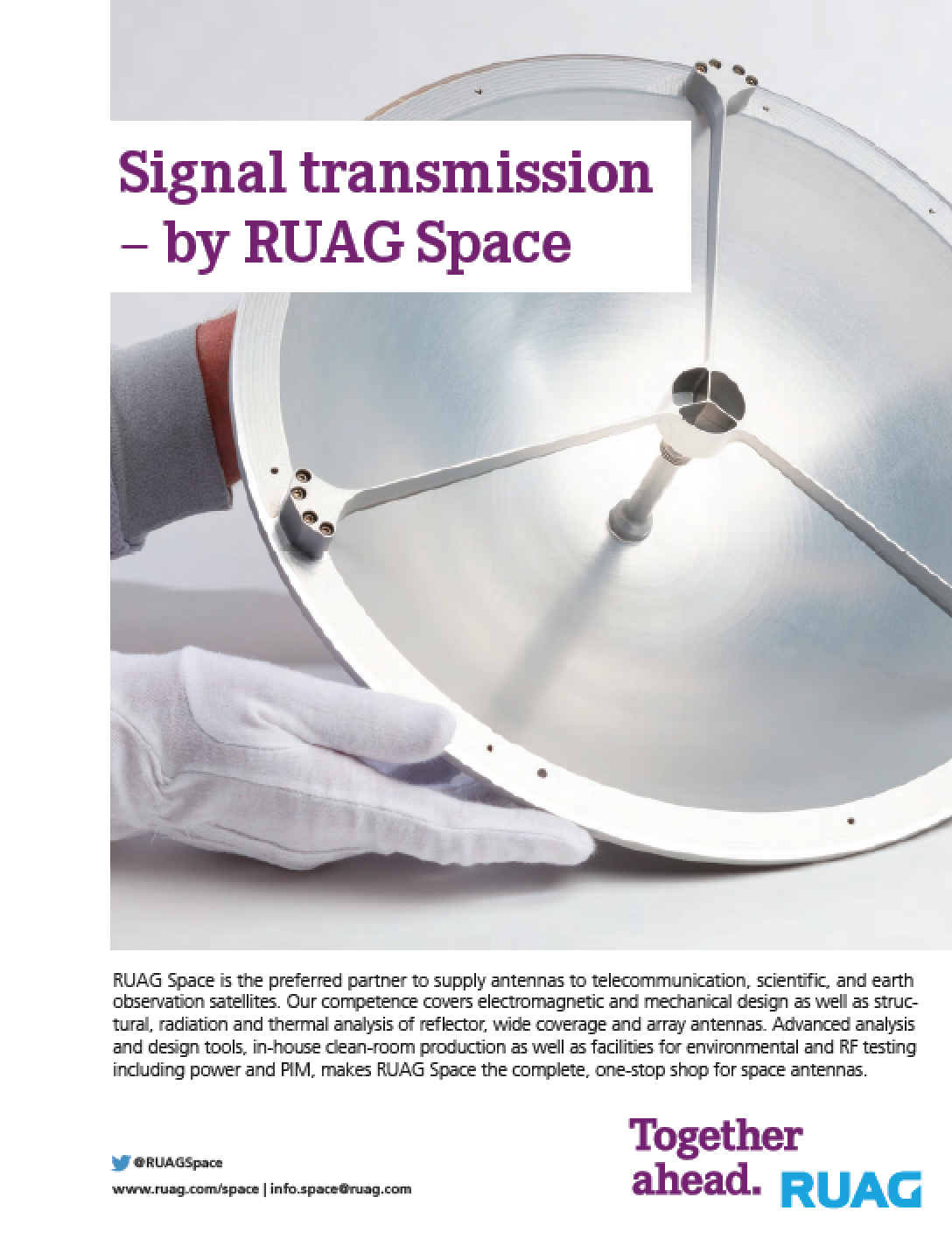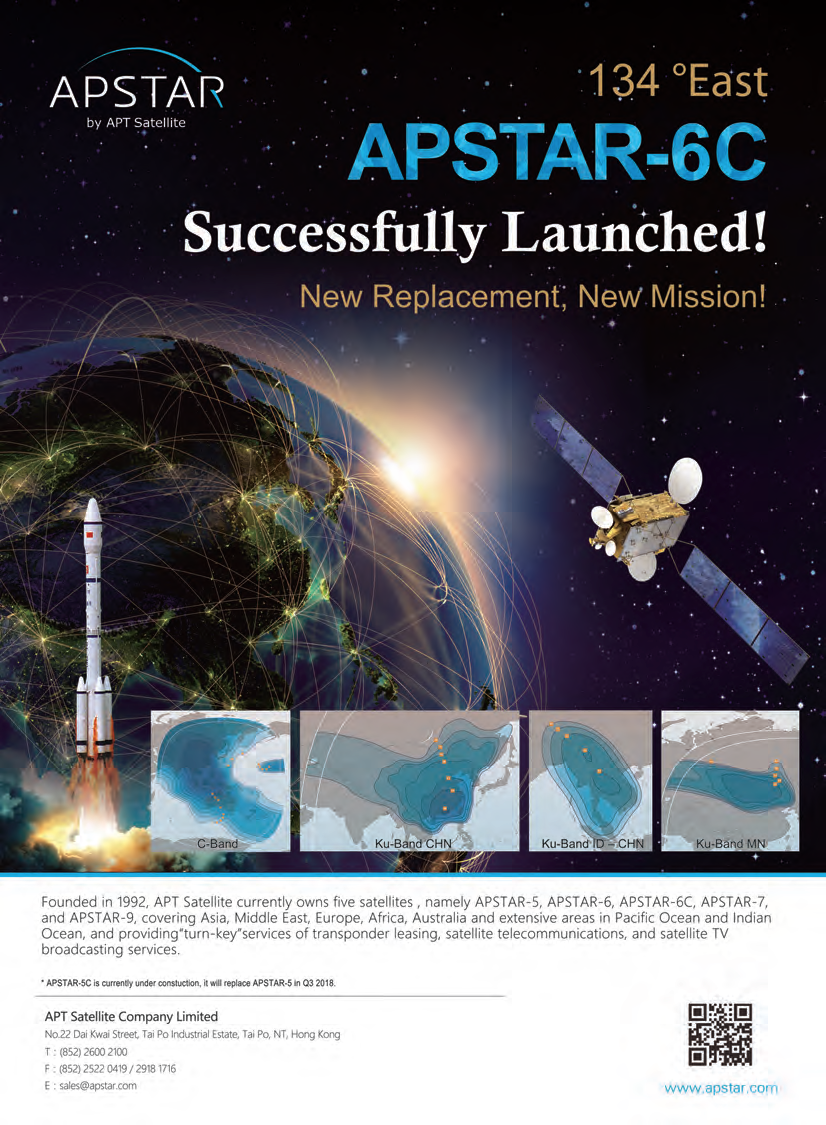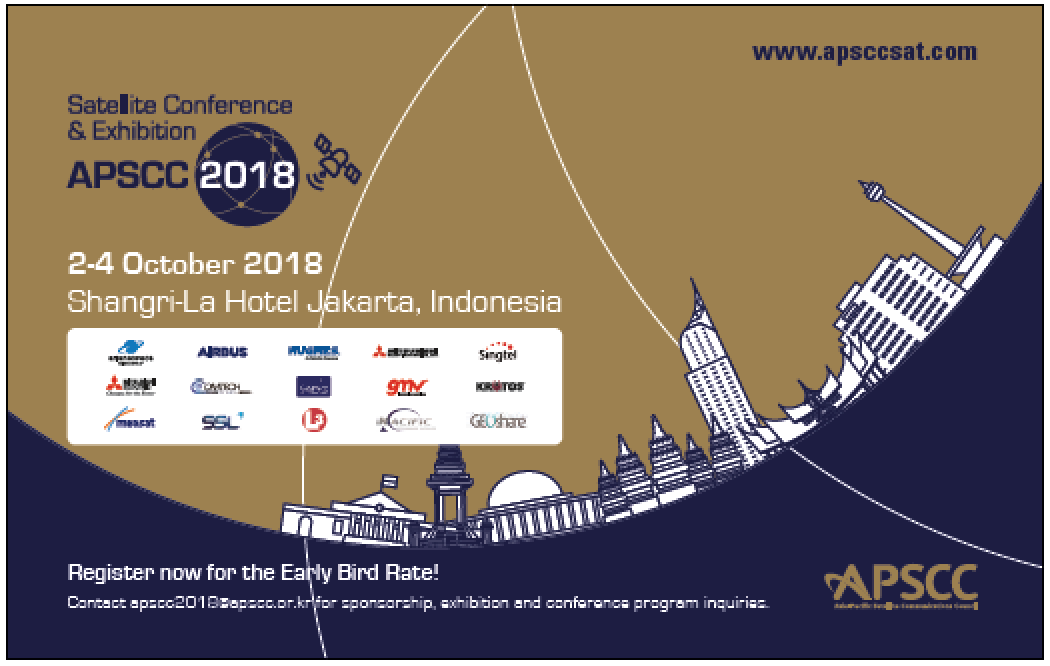The current state of the art for interplanetary space travel is essentially unchanged from the techniques that were used to send Mariner 10 to Venus and Mercury in 1973. Once in space, a satellite’s chemical rocket engine provides high thrust for a very brief period, starting a long coast phase that takes advantage of as many gravity assist maneuvers as possible. Many months or years are then required to travel anywhere interesting — even maximizing propellant efficiency in this way, there are still significant limitations placed on spacecraft mass and payload.
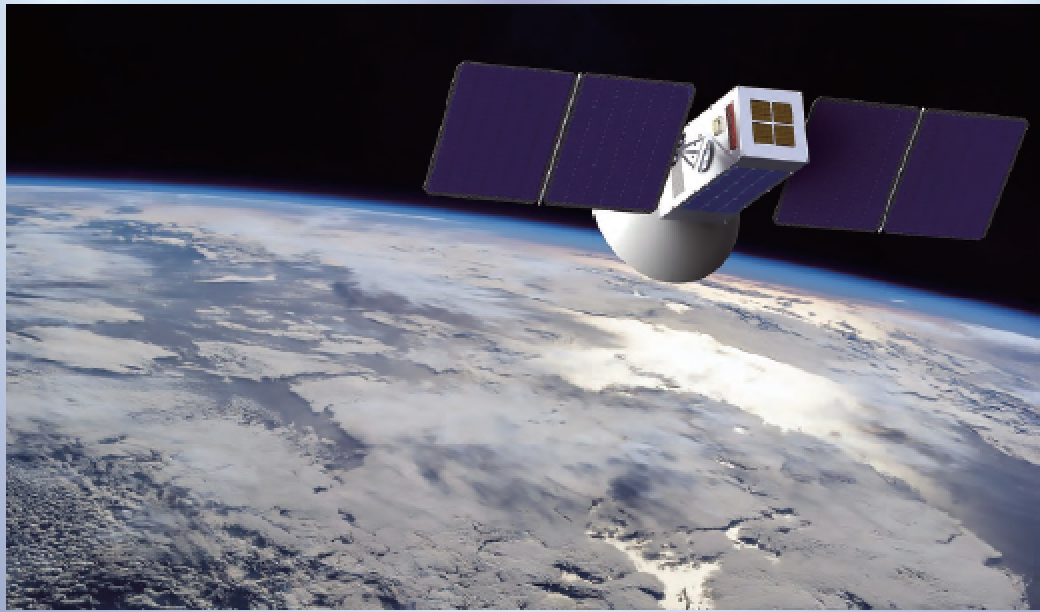
Solving this problem has not been particularly urgent while spacecraft remain unmanned and space agencies remain patient. But as human exploration of the solar system increases, we’ll need engines to speed things up. For space travel, better engines aren’t necessarily more powerful; instead, these engines are more efficient and able to rely on less propellant, and significantly safer to manufacture and launch. There are an array of promising new propulsion technologies at various levels of technological readiness, all of which have the potential to make an enormous difference in the very near future as we send humans to Mars and beyond.
Maximizing Payloads
Fundamentally, space travel is about transporting useful mass from one place to another, ideally as quickly as you can. Moving mass requires engines and fuel, and the more mass you need to move, the more fuel is required — don’t forget that fuel adds even more mass that also needs to be moved.
The Space Shuttle, for example, required on the order of 20 times its own mass in fuel [ed note: coolcosmos.ipac.caltech.edu/ask/268-How-much-did-the-Space-Shuttle-weigh- ] to reach orbit. In general, rockets that launch payloads into space have payload fractions [ed note: en.wikipedia.org/wiki/Payload_fraction] of between 2 and 5 percent, meaning that more than 95 percent of the launch mass consists of things that are necessary but not ultimately useful.
Compare current space travel to early automobiles. Due to a number of factors — emerging standards, technological advancements, and the oil economy, to name but a few — fuel efficiency of automobiles has increased about 80 percent since 1975 [ed note: www.washingtonpost.com/news/wonk/wp/2013/12/13/cars-in-the-u-s-are-more-fuel-efficient-than-ever-heres-how-it-happened/?noredirect=on&utm_term=.a11f7e4a6895]. As the automobile industry grew, funding and research supported this rise in efficiency, and as access to and interest in commercial space increases, the same pattern of efficiency gains seems likely.
Within the limitations of conventional rocket technology, there are a few different ways of maximizing the payload that can be sent to an interplanetary destination by reducing the mass devoted to propulsion. This is accomplished primarily by using as little fuel as possible to transfer from one orbit to another.
The goal with planning an efficient transfer is to minimize velocity changes, or Δv (pronounced “delta-vee,”): that is, minimizing the amount of acceleration and deceleration necessary, each of which burns fuel. A spacecraft propulsion system has a fixed amount of Δv, defined by its own efficiency and the mass of the payload that it’s attached to, and that Δv is “spent” whenever thrust is used.
Transfer Orbits
The most efficient way of traveling more or less directly to another planet (the transfer that uses the least amount of Δv) is through a Hohmann transfer orbit. From LEO, entering a Hohmann transfer orbit to Mars takes a Δv (acceleration) of about 3.5 km/s. Entering low Mars orbit from the transfer orbit takes a Δv (deceleration) of about 2 km/s, meaning that a spacecraft needs a total Δv of around 5.5 km/s to travel in this way from an Earth orbit to a Mars orbit.
An ideal Hohmann transfer orbit between two planets depends on a specific orbital alignment. For Earth and Mars, that window happens once every 26 months, with a minimum travel time of about nine months. Unfortunately, these ideal transfer windows only work in one direction and a return trip from Mars to Earth will either need to spend significantly more time in transit, or wait for a new window.
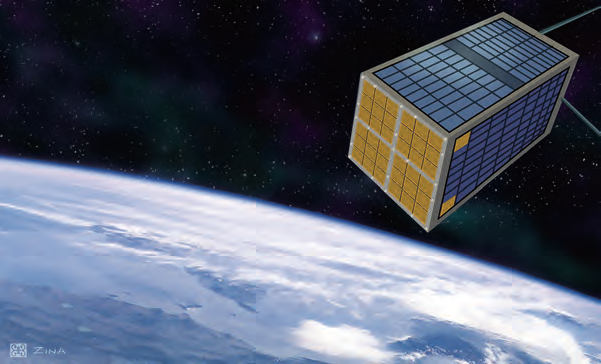 Electrospray in-situ. Image is courtesy of Accion.
Electrospray in-situ. Image is courtesy of Accion.
Most proposals for sending humans to Mars and back include stays of about 500 days, time to accommodate entry and exit windows. Beyond Mars, Hohmann transfer orbits start to take an impractically long time — optimally, it takes about 36 to reach Jupiter and more than six years to reach Saturn. While these are the most efficient direct transfer orbits, traveling beyond Mars still requires an amount of Δv that is often beyond the capability of the current generation of launch systems.
Gravity Assists
To reduce Δv requirements even further, most spacecraft traveling to the outer planets use gravity assist maneuvers to increase velocity without expending propellant. Gravity assists leverage planetary motion to change both speed and direction — as a spacecraft passes close to a planet, the planet’s gravitational pull speeds the spacecraft up on the way in, and slows it down on the way out. However, since the planet is also moving in its orbit relative to the sun, the spacecraft gets pulled along, affecting its velocity. The spacecraft can either be accelerated or decelerated, depending on whether it approaches the planet towards or against the orbital direction.
To get to Saturn, for example, the Cassini spacecraft used two gravity assist maneuvers around Venus twice, as well as one from Earth and one from Jupiter. While Cassini’s total travel time was about the same as a Hohmann transfer, the Δv needed was just 2 km/s, rather than the 15 km/s that a Hohmann transfer orbit from Earth to Saturn would have required. This allowed Cassini to carry a much larger scientific payload than it would have been able to otherwise. The disadvantage of gravity assist maneuvers is that their usefulness is dependent on planets being in a specific alignment, which makes relying on them for frequent transfers impractical.
Although these techniques for maximizing efficiency are certainly important, as we think about what it will take to send humans to Mars and beyond, it becomes necessary to increase the payload fraction itself — spending mass budgets on the transport of useful cargo rather than fuel. The best way to do this is by significantly increasing the propulsive efficiency of the engine, such that the same amount of fuel can impart more Δv.
Specific Impulse
The efficiency of rocket engines is measured through their specific impulse (abbreviated Isp). Specific impulse quantifies how effectively the propellant of a rocket gets turned into useful thrust — higher specific impulse means more Δv per unit of propellant. In practice, engines with higher specific impulse have higher exhaust velocities. This is where the efficiency increase comes from: since the mass of the propellant exiting the engine is constant, making it exit faster will give the engine more thrust without increasing propellant consumption
Specific impulse is conventionally measured in seconds, although this unit is not particularly meaningful. In practical terms, specific impulse is the number of seconds that a unit of propellant will last while the engine that’s using it produces an identical unit of thrust — an engine with an Isp of 200 seconds will use 1 kg. of propellant to provide 1 kg. of thrust for that amount of time, and an engine with an Isp of 400 seconds (which is twice as efficient) will produce either twice as much thrust with the same amount of propellant, or the same amount of thrust for twice as long.
To put specific impulse in context, the solid rocket boosters on the Space Shuttle had an Isp of 286 seconds and its main engines had an Isp of 453 seconds. The Centaur upper stage, commonly used to send spacecraft on interplanetary missions, has an Isp of 450 seconds, and the R-4D engine (the main engine for the Cassini space probe to Saturn) has an Isp of 312 seconds. Chemical propellants max out their specific impulse at somewhere between 500 and 600 seconds [ed note: https://archive.org/details/nasa_techdoc_19700018655], meaning that completely different technologies are required to substantially improve engine efficiency.
Near-Term Advanced Propulsion Systems
With chemical propulsion hitting efficiency limits, electrical propulsion is a critical next step towards our expansion beyond Earth’s orbit. Again, this is a comparable adoption curve to the automobile industry, which is experiencing rising popularity of electric vehicles.
Rather than energizing mass through a chemical reaction, electrical propulsion relies on electromagnetic fields for the direct acceleration of ionized particles (atoms or molecules with a net charge) to very high exhaust velocities. As electricity can be continuously generated by relatively low-mass systems (such as solar panels), the majority of the propellant is converted directly into thrust, offering order of magnitude increases in efficiency. The amount of thrust generated is usually much lower than chemical rockets, but by thrusting continuously for weeks or months rather than seconds or minutes like a conventional rocket engine does, ion engines can efficiently reach much higher speeds.
Gridded Ion Thrusters
There are a variety of ways of building electrically powered ion engines.
One of the first types of ion engines to be developed was the gridded ion thruster. In this design, a high mass, electrically neutral propellant (like xenon, argon, or iodine) is injected into a chamber, where it’s bombarded with electrons, ionizing the atoms with a positive charge and forming a plasma. At the other end of the chamber, a positively charged grid and a negatively charged grid create an electric potential. As the positive ions diffuse out of the plasma and through the first grid, they’re accelerated by the second grid to very high velocities, generally several tens of kilometers per second.
With these high exhaust velocities comes a high specific impulse of between 2000 and 4000 seconds [ed note: www.mdpi.com/2226-4310/4/4/58], nearly ten times better than a conventional rocket engine, at thrust levels of a few Millinewtons. In practice, this massive improvement in specific impulse translates into a spacecraft that can execute a mission while needing to carry just 16 percent of its mass in propellant rather than 82 percent. This means that the same overall mass budget results in a spacecraft that can carry more payload, travel farther and faster, or both.
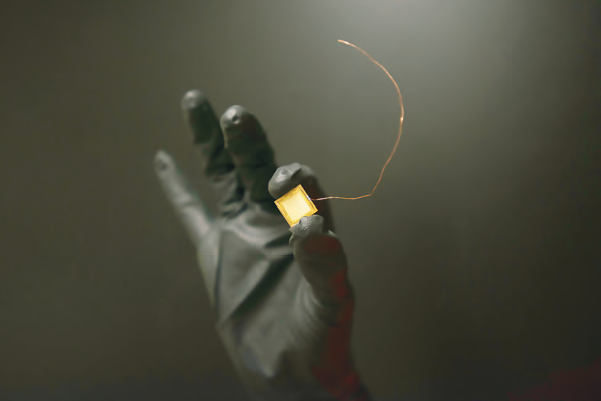
Tiled Ionic Liquid Electrospray. Image is courtesy of Accion.
Hall Thrusters
While gridded ion thrusters offer high specific impulse and high efficiency, they tend to be complex, requiring a substantial amount of power to operate relative to their output. A mechanically simpler variant (and one of the most successful electrical propulsion designs to date) is a Hall-effect thruster, several hundred of which have flown in space over the last few decades.
Instead of charged grids, a Hall thruster uses an electron plasma to both ionize and accelerate propellant via electrostatic potential. The overall efficiency and specific impulse of Hall thrusters is somewhat lower than that of a gridded ion thruster (a typical Hall thruster Isp is 1500 seconds), but they’re usually physically smaller and more robust, and tend to be more efficient with the use of power (producing a few tens of Millinewtons), which is often a limitation on smallsats.
MPD Thrusters
For larger spacecraft that need more thrust, or that require a focused amount of thrust over a short period of time (for orbital capture), magnetoplasmadynamic (MPD) thrusters are able to deliver tens or even hundreds of Newtons of force, limited primarily by how much power is delivered to them.
MPD thrusters generate a high-current electric arc between an anode and cathode, and a propellant is ionized by the cathode and accelerated by Lorentz forces. In testing [ed note: https://www.nasa.gov/centers/glenn/about/fs22grc.html], MPD thrusters have demonstrated exhaust velocities approaching 100 km/s, providing 100 Newtons of thrust from an input power of 1 mW, although only one has flown in space to date and at much lower power.
VASIMR
VASIMR (Variable Specific Impulse Magnetoplasma Rocket) is another experimental and potentially very high thrust plasma engine. VASIMR uses radio waves to turn gaseous propellant into a plasma, followed by ion cyclotron heating to further energize the plasma.
A magnetic nozzle accelerates the ions in the plasma out of the engine at 50 km/s. With an input power of 200 kW, the first flight-suitable generation of VASIMR is estimated produce 5 Newtons of thrust with a specific impulse of 5000 seconds. The “variable” in VASIMR’s name refers to its ability to trade efficiency for power by varying its exhaust parameters, providing a versatile engine that can meet different mission requirements.
Electrospray Thrusters
While most of the above thruster designs can be scaled up, they don’t scale down well, which prevents them from being useful for the rapidly expanding smallsat market.
A much different type of ion thruster, called an electrospray thruster, is ideal for smallsats while also maintaining utility for larger spacecraft and payloads. Electrospray thrusters still rely on ionized propellant, but they don’t need to generate a plasma. Instead, an unpressurized liquid salt is extracted from microscopic emitters and accelerated to 30 km/s by the electric fields generated in an extractor grid.
Each thruster is a cube just a few centimeters on a size, with an Isp of 2000 seconds and 1000 m/s of Δv for typical 1U cubesats. For larger spacecraft, electrospray thrusters also have a clear path towards increased thrust density: while the current technology produces 1.6N of thrust per square meter of thruster, the theoretical limit is 10 Kilonewtons, at which point a pair of centimeter-sized thrusters would be able to provide orbital station keeping for the International Space Station.
Power in Space
The amount of thrust that EP engines are able to provide depends on the amount of power that they’re able to use to accelerate their propellant. At the moment, the demands of high thrust ion engines are far beyond the capabilities of the current generation of spacecraft power supplies. There are no systems in space right now that are able to generate megawatts, or even hundreds of kilowatts, of electricity— to put this amount of power in context, the four pairs of thirty-five meter long solar panels that provide power to the ISS generate a maximum output of 120 kilowatts [ed note: www.nasa.gov/mission_pages/station/structure/elements/solar_arrays-about.html].
As solar power density decreases as the distance to the sun increases, solar arrays are not practical for providing significant amounts of power beyond the orbit of Mars. Instead, spacecraft have been relying on nuclear power, in the form of small radioisotope thermoelectric generators (RTGs). RTG designs vary, but in general, a few kilograms of uranium or plutonium can produce several thousand watts of heat, which is converted to several hundred watts of electricity. The RTG will continue to function for decades, although its output will degrade over time.
Hundreds of watts is not nearly enough electricity to power a high-thrust ion engine, which can demand megawatts (or more) per engine. Nuclear power is the only current practical solution for this, but there hasn’t been a substantial amount of recent progress towards the kind of high output, low mass nuclear reactors that would be necessary for space flight.
NASA has been working on small reactors designed for space intermittently since the 1950s, and the Soviet Union successfully operated a series of 3kW reactors in space in the 1970s and 1980s [ed note: https://en.wikipedia.org/wiki/BES-5]. NASA’s new Kilopower reactor is scalable up to 10 kW (and could operate in space, although it was designed for planetary surfaces), and private space companies are also getting involved, with Atomos targeting 1 MW [ed note: youtu.be/tDWPLF3DuXM?t=467] for its in-space reactor. When these new innovations come online, doors are opened for electric engines to efficiently move spacecraft to our farthest destinations.
What’s Next for Ion Engines
Gridded ion thrusters and Hall thrusters have proven themselves in space, but newer technologies such as MPD thrusters, VASIMR, and electrospray thrusters promise to be less expensive, more robust, more scalable, more efficient, and more powerful all at the same time.
While NASA is working on its own MPD thrusters, VASIMR and electrospray thrusters are being commercially developed by Ad Astra and Accion Systems respectively. Accion plans to fly its first thrusters on three different missions in 2019 [ed note: No date yet for first VASIMR flight — https://www.reddit.com/r/space/comments/8zw7ph/we_are_scientists_at_ad_astra_rocket_company/e2m6tfa/].
Initially, electric propulsion is likely to see the most use in low power, long duration applications in near Earth orbit, including gradual orbit changes, drag compensation, orientation and station keeping, and de-orbiting. Until now, small and efficient thrusters have not been available for smallsats, severely limiting their usefulness — with the maneuvering capability that ion thrusters enable, space will soon be more accessible than ever.
As the technology matures and additional power sources become available, more powerful ion thrusters could be used on space tugs that perform significant orbital adjustments to large satellites, moving them into geostationary orbits after launch or even performing refueling and repairs. Long term, electric propulsion will come into its own once we have enough in-space power to take advantage of high thrust applications. At that point missions to Mars that take weeks instead of months become a reality. Human exploration of the solar system requires reliability, speed, and above all efficiency, and electric propulsion is the way to make it happen.
www.accion-systems.com/

Natalya Bailey is the CEO and a co-founder of Accion Systems. Natalya earned her doctorate in space propulsion from MIT where she helped invent the first working prototype that made use of an ion propulsion technology for small satellites, which then became Accion Systems. Prior to MIT, she invented a new chemical rocket technology that she turned into a space startup. At Accion, she has developed an electric rocket system that can work at a smaller scale than the alternatives, and is cheaper and easier to manufacture. She was named to the Forbes’ 30 Under 30 list in 2015. During graduate school, Natalya was a National Science Foundation Fellow and a NASA Ambassador to the U.S. at the International Aeronautical Congress.


